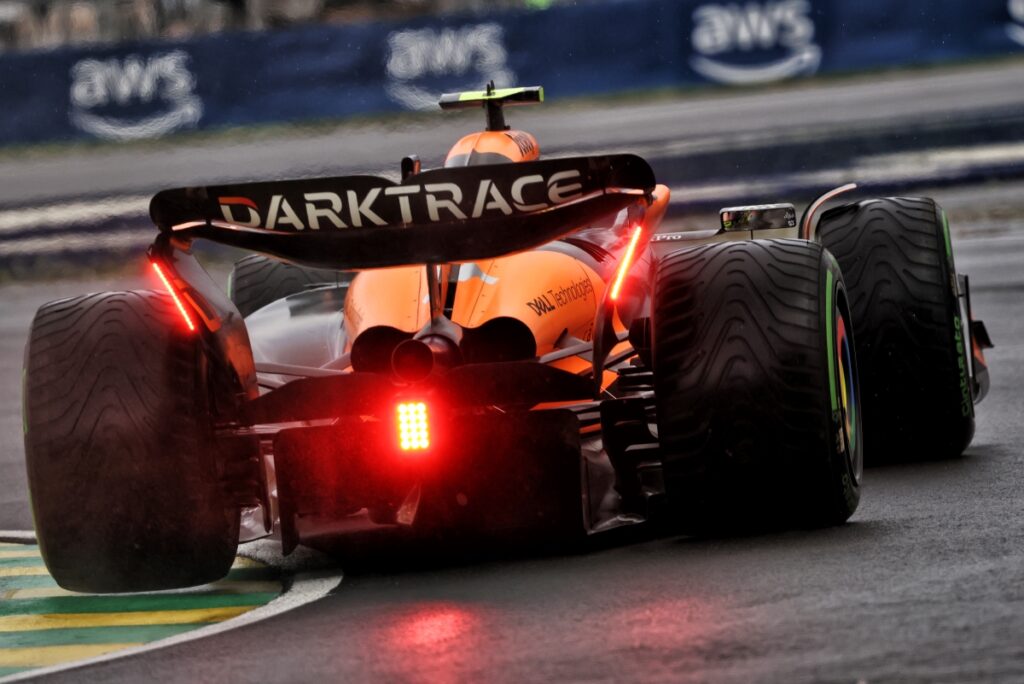Lando Norris Reveals McLaren’s Canadian GP Will Expose True Slow-Speed Performance

The upcoming Formula 1 Canadian Grand Prix could be the definitive litmus test for McLaren's slow-speed cornering improvements, according to Lando Norris. After a roller-coaster season that saw McLaren progress from occasional Q1 exits to regular podium contenders via mid-season updates, the Woking-based team is keenly observed for its weaknesses in low-speed corners. While the team has been snapping at Red Bull's heels on high-speed circuits, tight corners remained a stumbling block throughout last season.
This year, however, McLaren introduced significant upgrades in Miami, which demonstrated notable gains in slow-speed sections. Norris capitalized on these updates, clinching his maiden F1 victory.
McLaren’s impressive performance in Monaco also suggested that the new parts installed have exceeded expectations in handling slow-speed sections. Nevertheless, Norris cautioned that the Circuit Gilles Villeneuve, characterized by its long straights interspersed with low-speed traction zones, presents the ideal terrain to truly gauge McLaren's progress.
“I would say that is still our biggest weakness,” Norris candidly shared with F1. “Yes, we performed well in Monaco, but that's a track where you're primarily dealing with slow corners. When you mix slow and medium-fast corners, balancing the car becomes more difficult.” He added, “Monaco is unique. Our issues in slow corners aren't completely resolved; if we want to keep up with Ferrari and others, there's more work to do.”
 MCL38. 07.06.2024. Formula 1 World Championship, Rd 9, Canadian Grand Prix, Montreal, Canada, Practice Day." />
MCL38. 07.06.2024. Formula 1 World Championship, Rd 9, Canadian Grand Prix, Montreal, Canada, Practice Day." />Norris is, however, optimistic, acknowledging that McLaren has significantly improved on the initially fragile MCL38. “We've made huge strides, particularly in those areas where we were most vulnerable. As a result, we've achieved more consistency this year,” Norris confirmed. “We're now much closer to where we need to be compared to rival teams.”
Despite these improvements, there remain several areas for refinement. “There's still plenty we aim to improve upon and several aspects where progress is essential. But with the rate at which we've developed over the last year, I am confident we can tackle even more challenges ahead,” Norris stated with conviction.
Team principal Andrea Stella echoed this sentiment, though he pointed out that some developmental issues still need addressing. Specifically, the Circuit Gilles Villeneuve will test McLaren's ability to handle kerbs and bumps efficiently, areas where the car is currently lacking. “We aren't completely satisfied with the MCL38's performance on kerbs and bumps,” Stella admitted to Autosport. “Solving these issues will require foundational changes rather than short-term adjustments.”
He elaborated, “We are tweaking the setup continuously, but we're yet to achieve the ride quality and kerb performance seen in some other cars. Our drivers frequently comment that other models seem to handle kerbs with far more ease.”
As McLaren heads to Montreal, all eyes will be on how their upgrades translate into actual performance on one of the most trying circuits of the season. If Norris and his team can navigate the slower corners as efficiently as they hope, it could signify a new era for McLaren—a team adapting, improving, and returning to its glorious past.